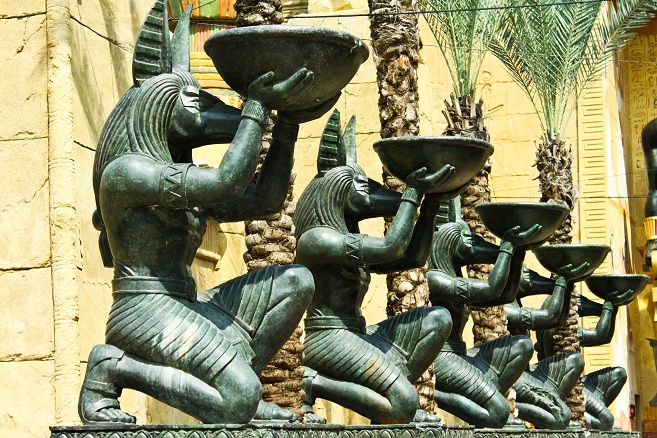Want to learn more about the ancient Egyptian jackal? Read on for facts and info on the endangered species of ancient Egyptian jackals and their role in Egyptian mythology…
The Egyptian jackal is both a very significant mythological character in a different history as well as an endangered species of jackal that is native to the country of Egypt. It was once found all over Egypt, Libya as well as the entire Arabian Peninsula but the population has significantly decreased due to over hunting which has reduced the Egyptian jackal into an endangered species.
Egyptian Jackal Mythology
The ancient Egyptian jackal can be seen depicted in the form of a jackal headed god that was popularly known as Anubis. The majority of descriptions show the jackal headed god with a black colored head that is characterized by its long ears along with a pointed muzzle just like the actual animal. Anubis the jackal god is regarded as being one of the most significant mythological symbols of ancient Egypt.
He was regarded as being the God of burial rituals. It was also believed that Anubis judged each soul upon its death and assigned it its designated place. Anubis was regarded as being the ruler of the underworld and the protector of the dead.
Characteristics
The Egyptian jackal was characterized by its lanky structure and a thick fur coating. It appeared to be grey-beige in color although a dirty yellow shade may also be found. It had characteristic long and pointing ears that could be seen from a distance extending above its thin body. The locals referred to the Egyptian jackal as the wucharia. The Saharan wolf is considered to be a subspecies of this ancient animal.
Although lanky in its appearance the jackal is relatively heavier and larger than other species. Many critics argue that the Egyptian jackal should actually be classified as a smaller Desert wolf rather than a breed of jackal. This is primarily because of its dental measurements and the Carnal nature of its dentures.
The Egyptian jackal has an elongated upper jaw with a flat bottom jaw. Over the years extensive research has been conducted on the genetic structure of the Egyptian jackal. The latest DNA research has caused scientists and zoologists to classify the Egyptian jackal as a variation of the golden jackal had not a subspecies of the gray wolf.
A number of elements from the physical structure, caused scientists to consider it as a variation of the gray wolf. These were primarily its large ears, long legs and a body that resembled that of a wolf more than that of the conventional jackal. Nonetheless scientific research has proved it to be closer to the breed of jackals than wolves.
Today the ancient jackal can hardly be seen. The largest population of this species was in the western desert of Egypt and other areas such as Kharga, Dakhla and Siwa as well as certain areas near Cairo. Although the animal has now made it to the endangered species list because of over hunting yet there are no laws that restrict the hunting of this animal in Egypt.





